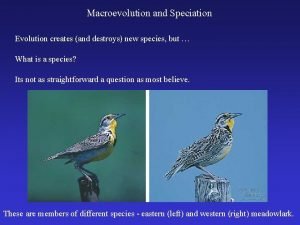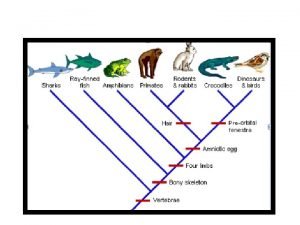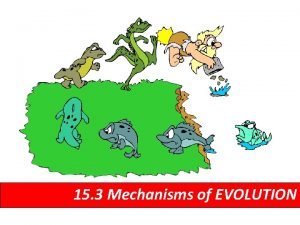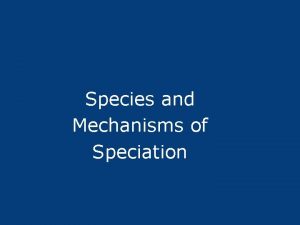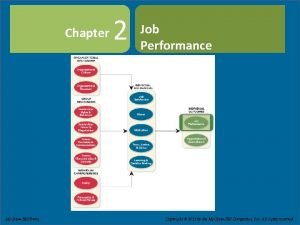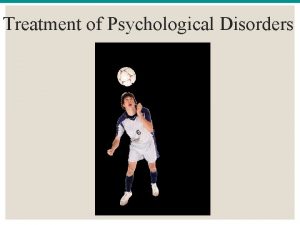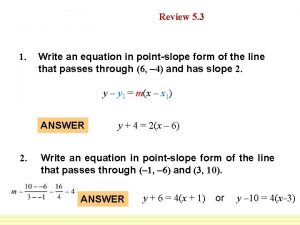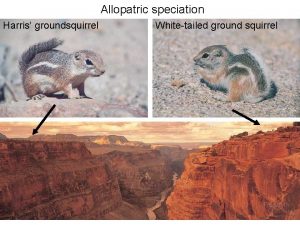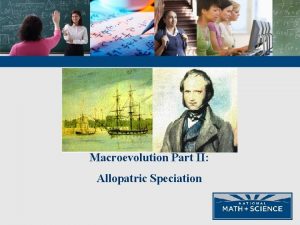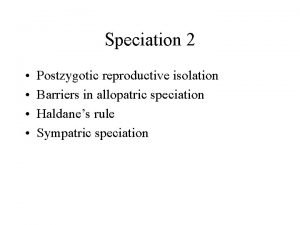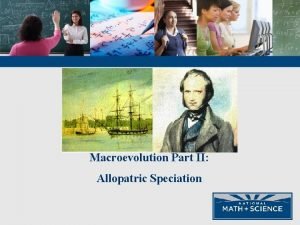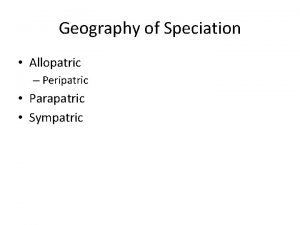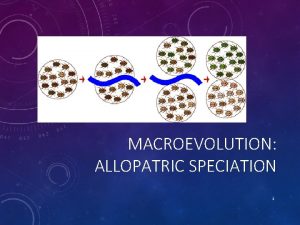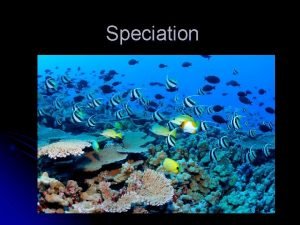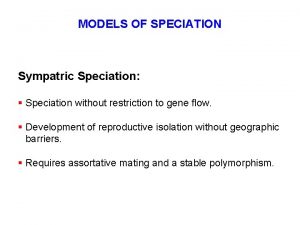Speciation macroevolutionary change Allopatric Speciation Most common form












- Slides: 12

Speciation & macroevolutionary change

Allopatric Speciation • Most common form of speciation • Due to geographical isolation - Gene flow stops between populations - Genetic differences emerge - Small populations = FOUNDER EFFECT (different allelic frequencies when populations separated)


Sympatric Speciation • Populations in same habitat become reproductively isolated • Related to polyploidy (offspring born with twice the normal number of chromosomes!) • These individuals can’t mate with original population • Super rare! • Mostly seen in plants as it’s easier for them to selffertilize

Comparing Allopatric & Sympatric Speciation

1. Heterochrony • Developmental change in size and shape • Timing of when genes are expressed • Two main components: (i) the onset and offset of a process (ii) the rate at which the process operates *Allometric growth and Paedomorphism are examples of heterochrony! Let’s take a look…

2. Allometric Growth • Varied rates of growth • Ex. the claw of fiddler crab grows much larger and faster than the rest of the crab

3. Paedomorphism • Organism becomes reproductive sooner (due to mutation) • Body still in its juvenile form when the animal becomes sexually mature; body development then STOPS Ex. Mud puppy (salamander) retains juvenile gills externally

Ex. Many domestic dog breeds (Canis lupus familiaris), derived from wolves (Canis lupus), exhibit paedomorphy with respect to adult wolves

4. Homeotic Genes • Genes regulating development of structures

Example: Hox Genes • Group of related genes that control body plan of an embryo along head to tail axis • Hox proteins determine type of segment (ex. Legs, wings, antennae, etc) • Initiate identity of a segment Imagine what can happen if a mutation occurs to one of these…

 Sympatric speciation vs allopatric speciation
Sympatric speciation vs allopatric speciation Sympatric speciation example
Sympatric speciation example Speciation
Speciation Allopatric speciation
Allopatric speciation Prezygotic barriers
Prezygotic barriers The most common form of securing channel through
The most common form of securing channel through Chapter 22 hair removal review questions
Chapter 22 hair removal review questions Employee behaviors that intentionally hinder organizations
Employee behaviors that intentionally hinder organizations Medication spellbinding
Medication spellbinding Vertex form
Vertex form How to rewrite in vertex form
How to rewrite in vertex form How to turn standard form into slope intercept
How to turn standard form into slope intercept What is the greatest common factor of 48 and 60?
What is the greatest common factor of 48 and 60?
